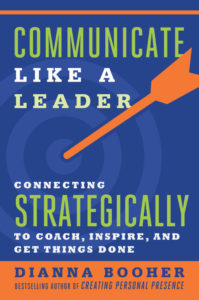


Big Bank acquired our Small Bank mid-month (real names removed to protect the guilty). Small Bank notified customers a month prior to the merger date, with instructions about what transactions/histories would merge into Big Bank’s system and which would not. Administrators got online instructions about how to prepare.
So far, so good!
On Monday morning, M -Day, we as customers had no access to either our business or personal accounts. That “no access” lasted for more than two weeks. Support lines told us that we were “valuable customers” but to expect long wait times. Those amounted to more than 90 minutes.
Here’s what clients experienced when failed operations descended into chaos during a badly managed merger:
My first question Day 3 of the merger: “Do my ACH deposits transfer from my Small Bank, or must we contact all 31 entities to give them the new bank routing number?”
– Answer 1 in the written guide: “Yes, they’ll transfer.
–Answer 2 from frontline rep at Small Bank: “No, they won’t transfer.”
–Answer 3 from Support Desk at Big Bank: “Yes, they’ll transfer.”
–Answer 4 from Support Desk at Small Bank: “No, they don’t transfer; I’m certain of that. You do need to contact your customers who pay by ACH and give them the new routing number.”
–Answer 5 from manager at Big Bank: “Yes, they’ll transfer—but only for 90 days. Then you’ll need to contact your customers who pay by ACH.”
This final, correct answer came on Day 14 of the merger. Other questions—same conflicting responses and run-arounds.
On Days 1, 2, 3, many customers (according to the bank’s agents themselves on the support lines) could not even access their accounts. Either their former credentials didn’t work, the Big Bank’s “secure browser” didn’t work, or their downloaded “tokens” didn’t work.
And when clients could log in days later, various features of the online system didn’t work—including online Bill Pay!
By Day 20 of the merger at both the Big Bank and the Small Bank, the reps had been trained to apologize (or maybe, on their own, they decided that was the best course of action to calm angry customers).
On various calls with multiple agents and departments in an attempt to use my two working accounts there, agents offered these apologies:
–“I’m so very sorry. It’s not just your account; everybody is having problems.”
–“I’m sorry. I don’t know what to tell you if it still doesn’t work. Let me try to transfer you to somebody else who might be able to help you.”
–“Look, we’re doing the best we can! We’re working 12 hours day—even on Saturdays.”
–“You’ve got the wrong department. I can’t help you. You might try X department. Or maybe Y department. I’m sorry this is happening, but that’s just not what we do in this department and that’s all I can tell you. I know NOTHING about that.”
–“I understand your pain. I understand that you need this to work. I’ll keep investigating and trying to get a resolution. But we’re helpless. We all just feel helpless. I’ll pass a message on to my manager, who’s head of the entire region. She’ll get back to you shortly and escalate these issues to whoever can get this worked out.” (The manager never called back. See the next section about that phenomenon.)
With these sad stories from the agents, consider the impression on customers about what’s happening behind the scenes. And that leads me to the next failure…
Promised call-backs from supervisors and managers did not materialize. I and another customer continued to compare notes about the problems, the delays, and the non-existent call-backs from managers.
I presume the managers preferred to throw the frontline people under the bus–without support.
By Day 21 of the chaos, the Big Bank agent passed on this news: “We just can’t figure out the problem. We think this is something our “Bill Pay” vendors are responsible for. We’re going to have to hand it off to them to figure out. But it may be 7-10 days before they’ll get back to us with an answer. They’re massively overloaded with a lot of issues.”
And this news is supposed to excuse the Big Bank and make customers feel better?
From merger Day 1 until the present, the Big Bank has their TV ads running in the various local markets where the Small Bank has branches: “Welcome, Small Bank customers to Big Bank, where you’ll experience the superior service you deserve!”
When I heard that ad the first time, I almost doubled over laughing. But the laughter quickly faded into a whimper of anguish and a throbbing headache.
Mergers are not for the weak at heart. Leading firms, and the leaders within them, fix potential problems before M-Day so customers never need to “see them sweat.”
Learn more ways to communicate a positive message to customers with Communicate Like a Leader: Connecting Strategically to Coach, Inspire, and Get Things Done
